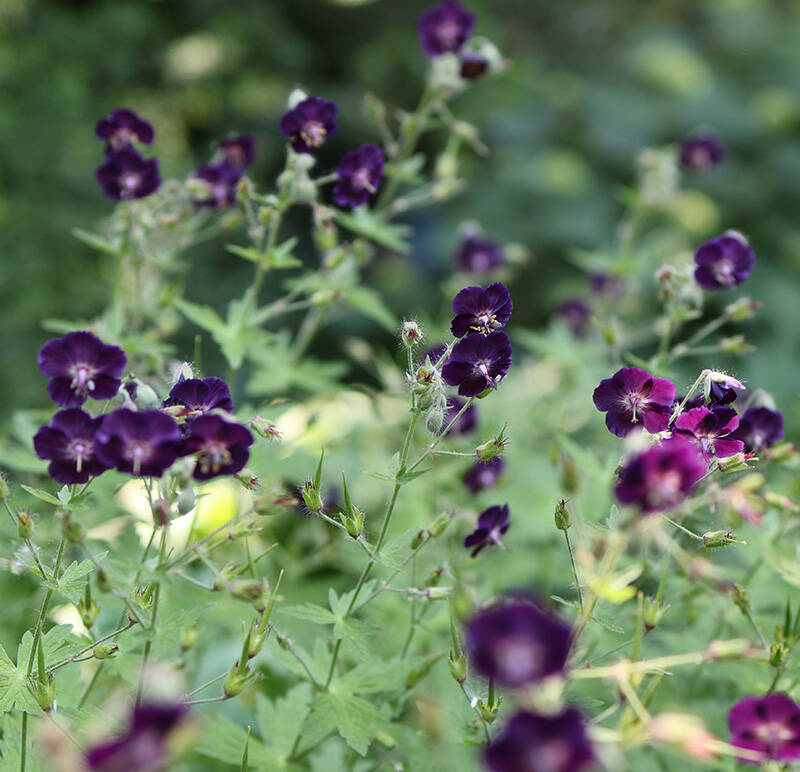Happy November! True, most tender annuals are done by now, and some tender perennials are showing signs of cold damage. But even if the more joyful aspects of gardening are past, there is still work to be done in the garden.
The chores for November fall into four categories, which handily all start with “p”: pruning (neatening up), protecting, propagating (and planting), and planning.
Featured image above by Frank Heijligers, from Expert Advice: 9 Tips for a Moody Winter Garden.
Pruning (and Neatening)

Once the leaves have dropped from your trees and shrubs and they’ve entered dormancy, it’s time to remove diseased or damaged branches (with trees, you should consider hiring an arborist) and evaluate their structures. That said, make sure the plant is not among those that shouldn’t be pruned until after they flower in spring. (See Your First Garden: What You Need to Know Before You Prune Shrubs and Trees.) Other plants that need to be cut back include certain berries (pruning out old canes will help the plant rejuvenate next year) and annual plants, which can be snipped down to the soil line, allowing the decaying roots to enrich the soil. But don’t get too hung up on neatness: Consider leaving perennials as they are, withered and brown, for overwintering insects and birds. And mulched leaves should be left in beds to return nutrients to the soil, hold moisture, and provide cover to beneficial insects. (For more on this topic, see Fall Gardening: 15 Ideas For What to Do With All Those Leaves.)
Protecting

Depending on your location, you may need to help your non-cold-hardy plants survive.This means digging up dahlias and cannas once the top growth is killed by frost, and storing them for the winter (see DIY: How to Store Dahlia Tubers in Winter). And some plants, like fig trees, newly planted trees, or tropical ferns, may need to be covered to survive the winter. (See Garden Hacks: 10 Genius Ideas to Keep Plants Warm in Winter.) Other perennials can use that protective layer of leaves to moderate both temperature and moisture over the winter months.
Propagating (and Planting)

Transplanting in the fall is easier on the plants due to the cooler temperatures and coming dormancy. Their need for water is reduced during the fall since the cooler temps means less evaporation and dormancy means slow growth. This makes transplant shock far less likely, and the roots will grow until the ground freezes. Now is also the perfect time to take hardwood cuttings of figs and elderberries plants to propagate. Last, save some seeds. While some should be left for the winter birds, saving seeds helps promote a closed loop ecosystem and saves money.
Planning

The beginning of November is a perfect time to plan for next year’s garden. The summer is still a recent enough memory and the year-end holidays haven’t yet started. What worked? What didn’t? Maybe the Joe Pye weed was too tall and needs to be moved in the spring? Or maybe you finally figured out where to plant the lavender so that it survived and thrived? Maybe you’ve decided to upgrade your tools and treat yourself to a few that will last a lifetime? And then there are the catalogs that seem to come earlier and earlier every year. There is no happier joy in gardening than the joy of possibilities. As the days grow shorter and colder, the thoughts of all the possibilities for next year are sometimes what we need to get us through winter.
See also:
- Everything You Need To Know About Transplanting Plants
- Your First Garden: What You Need to Know About Cutting Back Perennials in the Fall
- November To-Dos: 9 Ways to Winterize Patios (and Other Outdoor Rooms)












Have a Question or Comment About This Post?
Join the conversation (0)